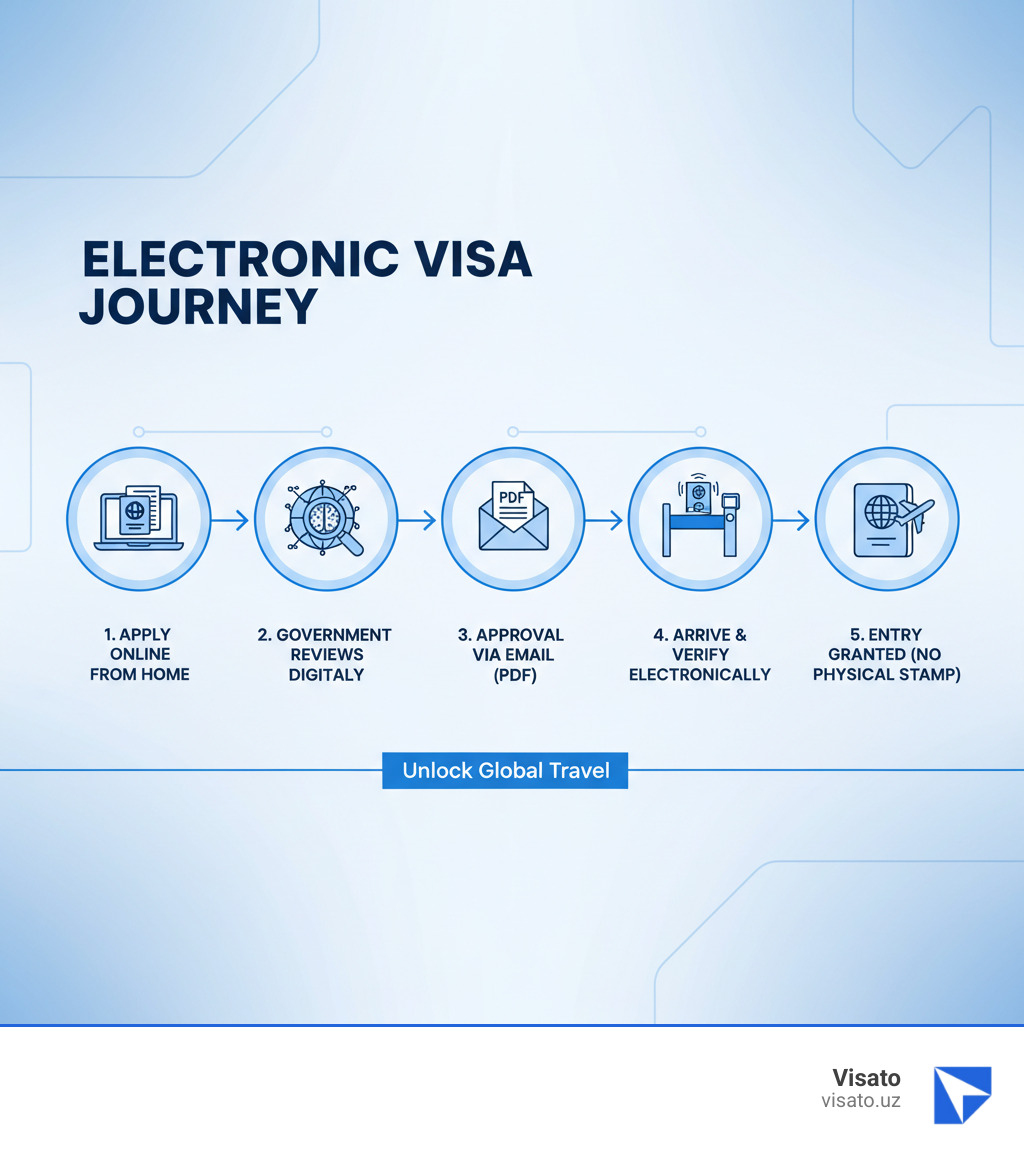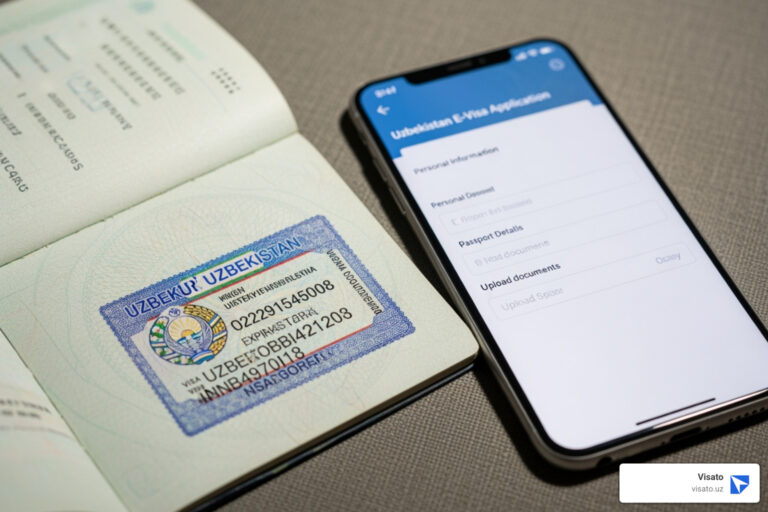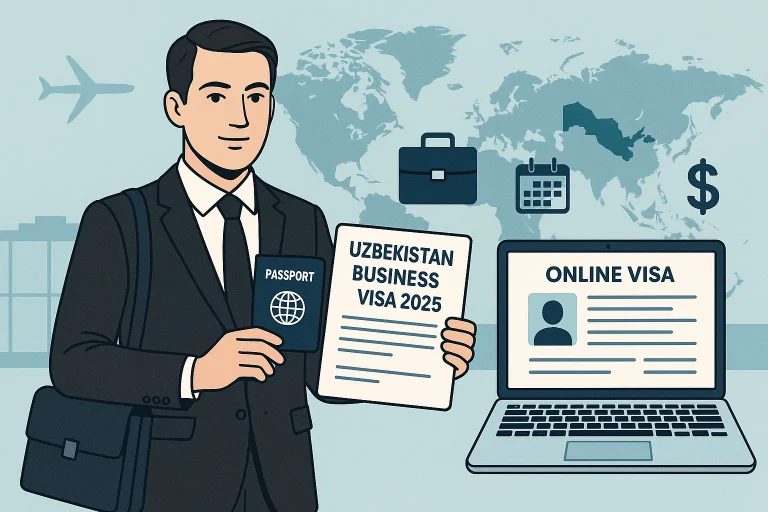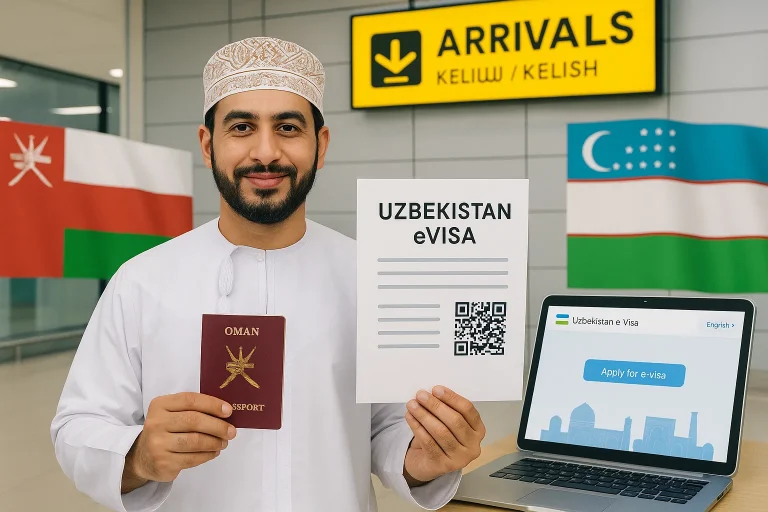What Is an Electronic Visa and Why Should You Care?
An electronic visa is a digital travel authorization that replaces the traditional paper visa stamp in your passport. Instead of visiting an embassy or consulate in person, you apply online, receive approval via email, and travel with a digital confirmation linked to your passport number.
Quick Answer: How Electronic Visas Work
- Apply online – Fill out a form on a government website or authorized platform
- Pay the fee – Submit payment via credit/debit card (typically $25-$100 USD)
- Receive approval – Get your e-Visa via email within minutes to several days
- Travel – Present your passport at the border; officials verify your e-Visa electronically
No embassy visits. No mailing your passport. No physical sticker required.
The world of international travel has changed dramatically. Countries like Australia, the United States, Vietnam, Turkey, and Uzbekistan now offer electronic visas to millions of travelers each year. These systems cut processing times from weeks to days while improving security through digital pre-screening.
As Nariman Huseynov, I’ve spent over 5 years helping thousands of international travelers steer the electronic visa application process through Visato, with a special focus on Central Asian destinations like Uzbekistan. I’ve seen how digital authorization makes global travel faster and more accessible for people from more than 60 countries.
Below, you’ll find everything you need to understand electronic visas, from how they differ from traditional paper visas to specific application requirements.
Understanding the electronic visa
An electronic visa (e-Visa) and an Electronic Travel Authorization (ETA) are online systems that confirm a foreign national’s eligibility to travel. The core idea is digital pre-screening, allowing the destination country to conduct background checks before you travel, which improves border security.
While both are electronic, an e-Visa is typically a digital version of a traditional visa for a specific purpose (like tourism). An ETA is often a pre-authorization for travelers from visa-exempt countries, serving as an extra security layer. Both are linked digitally to your passport number, so no physical sticker is required.
How they differ from traditional paper visas
The shift from paper to electronic visas is a game-changer. A traditional visa requires filling out paper forms, visiting an embassy for an interview, submitting your physical passport for weeks, and receiving a physical sticker in your passport.
In contrast, an electronic visa streamlines this:
- Online Application: The entire process is completed online from anywhere.
- No Embassy Visit: This saves significant time and travel costs.
- Digital Delivery: Approval is sent via email, with the authorization linked to your passport in the immigration system.
- Faster Processing: Processing times are reduced from weeks to just a few days or even minutes.
E-Visas vs. Traditional Visas: The Digital Shift
The way we get permission to travel internationally has changed dramatically. If you’ve ever waited months for a visa appointment or nervously handed your passport over at an embassy, you’ll appreciate what electronic visas have done to simplify this process.
Let’s look at what makes these two approaches so different.
| Feature | Traditional Visa | Electronic Visa (e-Visa/ETA) |
|---|---|---|
| Application Method | In-person at embassy/consulate, paper forms, mail | Online portal, digital forms |
| Processing Time | Weeks to months | Minutes to several days |
| Physical Document | Sticker/stamp in passport | Digital record linked to passport, email confirmation |
| Interviews | Often required | Rarely required, usually for clarification only |
| Passport Submission | Required, passport is held | Not required, you keep your passport |
| Best For | Long-term stays, complex cases, non-eligible e-Visa nationalities | Short-term tourism/business, eligible nationalities, convenience |
Both systems get you to your destination, but the journey to get there couldn’t be more different. The old way involved paperwork and appointments, while the new way puts you in control with just an internet connection.
The old way: Traditional visa processing
The traditional process was designed for thoroughness, not convenience. It required scheduling an embassy appointment weeks or months in advance, often involving travel to a major city. Applicants then attended an in-person interview with a consular officer, bringing extensive documentation like bank statements and employment letters.
The most difficult part was passport submission, where you would surrender your passport for weeks or even months, preventing any other international travel. The waiting periods were long and uncertain. If approved, you received your passport back with a physical visa stamp inside.
The new way: Digital authorization
Electronic visa systems have revolutionized this process. You can apply 24/7 from anywhere with an internet connection, eliminating the need for appointments or travel to an embassy. Paperwork is replaced by guided digital forms where you upload necessary documents electronically.
After submission, you receive an email confirmation with your approval, usually within days or hours. At the border, immigration officers scan your passport, and their system instantly pulls up your electronic visa approval. This digital verification is fast and secure.
Many systems require an e-Passport, identifiable by the small camera-like symbol on the cover. These passports contain a chip with biometric data, making digital verification even more efficient. This digital approach gives travelers back their time and peace of mind.
The Top Benefits of Going Digital with Your Visa
The electronic visa revolution is fundamentally changing international travel for both travelers and governments, creating a faster, cheaper, and more accessible system.
Advantages for travelers
For travelers, the benefits are immediate and significant.
- Convenience: You can apply from anywhere with an internet connection, eliminating the need to travel to an embassy or take time off work.
- Speed: Faster approval times are a major advantage. Many e-Visas are approved within a few business days, and some almost instantly. This allows for more spontaneous travel planning.
- Cost Savings: While there is an application fee, digital visas often cost less overall. You save on courier fees, travel expenses to a consulate, and other indirect costs. For example, Australia’s eVisitor is free, and Israel’s ETA-IL is only about $7 USD.
- Reduced Stress: The streamlined process means less paperwork and clearer instructions. Crucially, you keep your passport the entire time, removing the anxiety of waiting for its return.
- Practicality: A digital document is easy to manage. It lives in your email and can be saved on your phone, with no physical sticker to damage or lose.
Advantages for governments
Governments are embracing digital visas for their security and efficiency benefits.
- Improved Security: Improved border control is achieved through pre-arrival passenger screening. Governments can run background checks against international databases like Interpol before a traveler boards a flight, identifying potential risks in advance.
- Efficiency: The reduced administrative burden is substantial. Digital systems automate much of the manual work of processing paper applications, freeing up staff to focus on more complex cases.
- Better Data: Data collection and analysis from e-Visa systems provide valuable insights into travel patterns and security trends, allowing for more informed policymaking.
- Economic Growth: Simplified visa processes lead to increased tourism. As shown in studies like The effect of visa types on international tourism, more visitors mean more spending, which boosts national economies.
Your Guide to the Electronic Visa Application Process
Ready to apply for your electronic visa? The process is designed to be straightforward. While each country’s system varies, most follow a similar pattern: fill out an online form, upload documents, pay a fee, and wait for an email approval. Accuracy is key, so it’s worth getting the details right the first time.
What information is typically required?
Being prepared with the right information and documents will make your application smoother. You will generally need:
- Personal details: Your full name as it appears on your passport, date and place of birth, gender, nationality, and contact information (email, phone, address).
- Passport information: Your passport number, issue and expiry dates, and issuing country. You will also need to upload a clear, scanned copy of your passport’s bio-page.
- Travel itinerary: Your intended arrival and departure dates, purpose of travel (e.g., tourism, business), and port of entry.
- Accommodation details: The address where you plan to stay, such as a hotel or a relative’s home.
- Digital photograph: A recent, passport-style photo that meets the specific size and background requirements of the application system.
- Additional questions: Depending on the country, you may be asked about your occupation, travel history, or security-related information.
Double-check that every detail matches your passport exactly to avoid delays.
Costs and processing times for an electronic visa
Costs and wait times for an electronic visa vary by destination.
Fees typically range from $25 to $100 USD. Some are cheaper, like Israel’s ETA-IL (around $7 USD), while others like Australia’s eVisitor are free (though a service charge may apply for their ETA). The East African Tourist Visa is at the higher end at $100 USD. It is crucial to remember that these fees are almost always non-refundable, even if your application is denied. Payment is made online via major credit or debit cards.
Processing times are a major benefit. Many e-Visas are approved within 2-3 business days. Russia’s unified e-Visa can be issued in as little as 4 days, and some ETAs are approved almost instantly. However, delays can occur due to errors or high application volumes, so it’s wise to apply at least a week or two before your trip.
If you’re planning to visit Uzbekistan, you can apply for an Uzbekistan e-visa through our streamlined process, with approvals often taking just 2-3 business days.
E-Visas Around the World: A Global Snapshot
The electronic visa is a global phenomenon, with countries worldwide adopting digital systems to make travel smoother and more secure. Each country’s system varies in speed, cost, and validity, but all offer a more convenient alternative to traditional visa applications. Eligibility, stay duration, and other requirements depend on diplomatic relations and security agreements between countries.
Key examples of the electronic visa in action
Here is a quick tour of some prominent electronic visa systems:
- United States: The ESTA (Electronic System for Travel Authorization) allows citizens from Visa Waiver Program countries to visit for up to 90 days. Chinese citizens with 10-year B1/B2 visas must use the EVUS (Electronic Visa Update System).
- Australia: The ETA (Electronic Travel Authority) is for travelers from countries like the US and Canada, while the free eVisitor is for EU passport holders.
- Canada & New Zealand: Both have their own eTA and NZeTA systems, respectively, for visa-exempt travelers arriving by air.
- United Kingdom: The UK is rolling out its own ETA system for visa-free nationalities.
- Russia: A unified e-Visa is available for citizens of 53 countries, allowing stays of up to 16 days.
- Other notable systems: Vietnam offers an e-Visa for stays up to 90 days, Turkey has a popular e-Visa system, and Israel’s ETA-IL is a low-cost, long-validity option. Japan also recently introduced its eVISA for short-term tourism for select nationalities.
- Uzbekistan: This Central Asian nation offers a straightforward e-Visa system for tourists and business travelers. At Visato, we’ve helped thousands from over 60 countries secure their Uzbekistan e-Visa. You can apply for an Uzbekistan e-visa through our platform.
Regional and future systems
The future of travel is digital and coordinated. The European Union is preparing to launch ETIAS (European Travel Information and Authorisation System) for visa-exempt visitors and plans a fully unified digital visa system by 2026. The UK aims for a fully digital border by 2025, and the US is exploring Digital Visa Authorization (DVA) concepts.
Regional cooperation is also growing, as seen with the East African Tourist Visa, which grants access to Kenya, Rwanda, and Uganda with a single application. These systems signal a move away from paper visa stamps toward a future of secure, efficient digital authorization.
Frequently Asked Questions about Electronic Visas
Navigating electronic visas can bring up questions. Here are clear answers to some of the most common concerns.
How do I know if I need an e-Visa?
Whether you need an electronic visa depends on three factors: your nationality, your destination country, and the purpose and length of your stay. A short tourist trip might be covered by an e-Visa, while a long-term work stay may not be.
Always check the official government immigration website of your destination country. This is the only source for accurate, up-to-date information custom to your specific situation.
What happens if my e-Visa application is denied?
Denials typically happen for specific reasons, such as an incomplete application, incorrect information, or failing to meet eligibility or security requirements.
Unfortunately, application fees are almost always non-refundable. If denied, your next step is usually to apply for a traditional paper visa through an embassy or consulate, which is a more involved and time-consuming process. To avoid denial, be honest, thorough, and double-check all information for accuracy before submitting.
Can I use an e-Visa at any port of entry?
Not necessarily. Some electronic visas are valid for entry at any international border, while others restrict you to specific designated airports, land borders, or seaports.
Airlines are required to verify your travel authorization before you board and will check if your e-Visa is valid for your arrival airport. If not, you could be denied boarding. Before finalizing your travel plans, check the official rules on the immigration website to confirm which entry points accept your specific e-Visa.
Conclusion: Accept the Future of Seamless Travel
The way we cross borders is changing right before our eyes. The electronic visa and Electronic Travel Authorization systems we’ve explored throughout this guide represent more than just a technological upgrade—they’re fundamentally changing how we experience international travel.
Think about what we’ve covered: applying from your living room instead of standing in embassy queues, getting approval in days instead of weeks, and breezing through immigration with a simple passport scan. The electronic visa removes the anxiety and hassle that used to define the visa process. No more mailing your passport away and hoping it returns in time. No more taking time off work for consulate appointments. Just a straightforward online application and a digital confirmation.
The growth of digital travel authorization isn’t slowing down. With the European Union rolling out ETIAS, the UK expanding its ETA system, and countries worldwide embracing digital borders, we’re watching a global movement unfold. Within a few years, physical visa stickers might seem as outdated as telegrams or fax machines.
What does this mean for you? Less stress, more freedom, and simpler travel. You can focus on planning your adventure—researching restaurants, booking accommodations, mapping out your itinerary—instead of worrying about paperwork and bureaucracy.
Here are our final tips to make your electronic visa application smooth: Check the official government website for your destination to confirm requirements. Apply at least a week or two before your trip to avoid any last-minute surprises. Double-check every detail you enter—your name, passport number, travel dates—because even small errors can cause delays or denials.
At Visato.uz, we’ve helped thousands of travelers from more than 60 countries obtain their Uzbekistan e-visas quickly and easily. Our platform is designed to be simple and secure, with most applications approved in just 2-3 business days. We’re available 24/7 if you have questions or need support along the way.
Whether you’re planning to explore the ancient Silk Road cities of Samarkand and Bukhara, find Uzbekistan’s stunning architecture, or experience its warm hospitality, we’re here to handle the visa part so you can focus on the exciting part—your actual journey.
Ready to experience the future of seamless travel? Get your Uzbekistan e-visa today and start your adventure with confidence.










